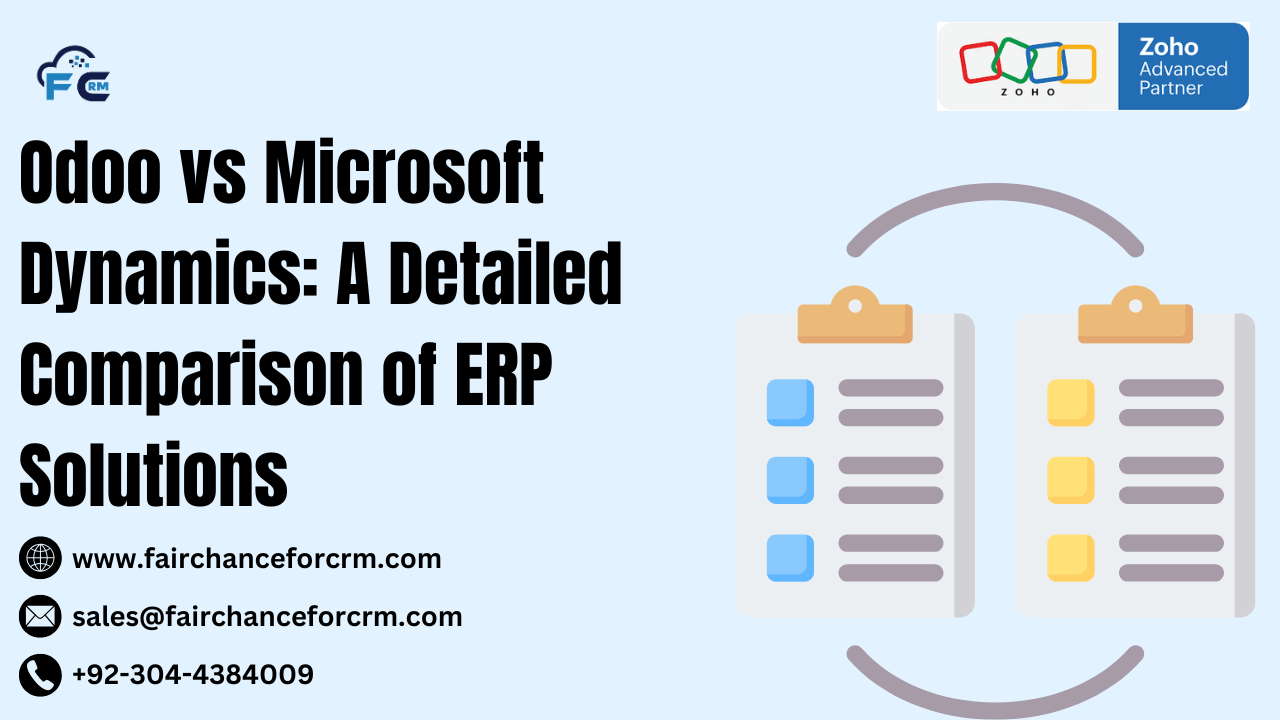In the world of enterprise resource planning (ERP) software, Odoo vs Microsoft Dynamics are two of the most popular solutions available for businesses of all sizes. Both platforms offer robust tools for managing operations, improving efficiency, and boosting productivity. However, they differ in several ways, including their features, pricing models, and target audiences. In this article, we will compare Odoo vs Microsoft Dynamics, highlight their pros and cons, and help you make an informed decision on which is the best fit for your business.
Also Read:
- Odoo vs Microsoft Dynamics
- Odoo Request Catcher
- Fixing Quantity Valuation in Odoo Using SQL
- Next.js and Odoo
- How to Copy Odoo Docker with Database
Odoo vs Microsoft Dynamics
What is Microsoft Dynamics?
Microsoft Dynamics comprises an ERP and CRM suite of software that was created by the company. Among its many offerings are Dynamics 365, Dynamics NAV, and Dynamics AX. Large businesses utilize Microsoft Dynamics because of its scalability, interaction with other Microsoft products, and broad capabilities. It provides a full range of services, including solutions for sales, marketing, operations management, financial management, and customer support.
Key Differences Between Odoo vs Microsoft Dynamics
1. Cost and Pricing
- Odoo: Odoo offers both a free community version (limited features) and a paid enterprise version. The cost of the paid version depends on the number of apps/modules a company chooses and the number of users. This makes Odoo highly flexible in terms of pricing, especially for smaller businesses.
- Microsoft Dynamics: Microsoft Dynamics, especially Dynamics 365, can be more expensive, with pricing often tailored based on specific needs and scale. This makes it better suited for larger enterprises with more complex requirements.
2. Features and Flexibility
- Odoo: One of Odoo’s biggest advantages is its modular nature. Businesses can start with just a few apps and expand as they grow. Odoo provides core functionalities such as accounting, CRM, project management, and manufacturing, with over 30,000 modules available on its marketplace.
- Microsoft Dynamics: Dynamics 365 offers a broader range of features, especially for larger enterprises. It includes tools for finance, operations, marketing, sales, and customer service. It is highly customizable but requires technical expertise for implementation and integration.
3. Ease of Use
- Odoo: Odoo is known for its intuitive interface and ease of use. Its modular design allows businesses to easily add or remove features, and its user interface is simple to navigate for non-technical users.
- Microsoft Dynamics: Microsoft Dynamics offers a more complex user interface, especially in the case of Dynamics 365. Its advanced functionalities may require extensive training, and it’s better suited for businesses with dedicated IT teams.
4. Customization and Integration
- Odoo: Odoo is highly customizable, thanks to its open-source nature. Businesses can modify the platform to suit their needs and even build custom apps. Odoo also integrates with various third-party apps and tools.
- Microsoft Dynamics: Microsoft Dynamics offers extensive customization options, particularly through Power Apps and Power Automate. Its integration with other Microsoft tools, such as Office 365, Azure, and Power BI, provides a seamless experience for businesses already using Microsoft products.
5. Scalability
- Odoo: While Odoo can grow with a business, it is typically more suited for small to mid-sized companies. However, it can scale up to large businesses with the right configuration.
- Microsoft Dynamics: Microsoft Dynamics is highly scalable and can handle the needs of large enterprises with complex operations, making it the preferred choice for larger businesses.
Pros and Cons
Odoo Pros:
- Affordable for small businesses
- Open-source (Community version is free)
- Modular system allows flexibility
- Easy to use and deploy
- Active community and a large marketplace of apps
Odoo Cons:
- Limited out-of-the-box features in the community version
- Requires more customization for larger enterprises
- May lack some advanced features that Microsoft Dynamics offers
Microsoft Dynamics Pros:
- Comprehensive and feature-rich
- Integration with other Microsoft products
- Great for large enterprises with complex needs
- High scalability and customization options
Microsoft Dynamics Cons:
- Expensive, especially for small businesses
- Complex setup and implementation
- Requires technical expertise for customization
Examples of Odoo vs Microsoft Dynamics in Action
- Odoo Example: A small e-commerce store uses Odoo to manage inventory, sales, and accounting. With Odoo’s modular apps, the business can add new features like customer relationship management (CRM) and project management as it grows.
- Microsoft Dynamics Example: A multinational corporation uses Microsoft Dynamics 365 to manage its operations across different regions. The company uses Dynamics for financial management, supply chain operations, sales, and marketing, ensuring seamless integration with Microsoft tools and enterprise systems.
Frequently Asked Questions (FAQs)
Q1: Which is more affordable, Odoo vs Microsoft Dynamics?
- A1: Odoo is generally more affordable, especially for small businesses, with its free Community version and lower pricing for its Enterprise version. Microsoft Dynamics is more expensive and often geared toward larger enterprises.
Q2: Can Odoo scale for large enterprises?
- A2: While Odoo is primarily designed for small to mid-sized businesses, it can scale with proper configuration and customization. For large enterprises with complex requirements, Microsoft Dynamics may be a better fit.
Q3: Which is easier to implement, Odoo or Microsoft Dynamics?
- A3: Odoo is generally easier to implement due to its simple interface and modular design. Microsoft Dynamics requires more time, resources, and expertise for implementation, especially for large-scale deployments.
Q4: Can Odoo and Microsoft Dynamics integrate with third-party applications?
- A4: Yes, both Odoo and Microsoft Dynamics offer integration capabilities with third-party applications, but Microsoft Dynamics has a broader range of integrations, particularly with other Microsoft tools.
Conclusion
Both Odoo vs Microsoft Dynamics offer excellent ERP solutions, but they are suited for different business needs. For small and medium-sized enterprises looking for a cost-effective, adaptable, and user-friendly solution, Odoo is perfect. Businesses with tight budgets and those seeking user-friendly software with lots of customization choices find it especially appealing.
On the other hand, Microsoft Dynamics is better suited for large enterprises with complex needs and the budget to match. Businesses who need extensive functionality and have committed IT resources choose it because of its strong, enterprise-grade capabilities, scalability, and deep connection with other Microsoft products.
The decision between Odoo and Microsoft Dynamics ultimately comes down to the size, complexity, and particular needs of your company. Both systems may boost productivity, promote expansion, and simplify your business processes.
For more information about Odoo vs Microsoft Dynamics, visit this link.
If you want to Free Trail Zoho, click on this link.




